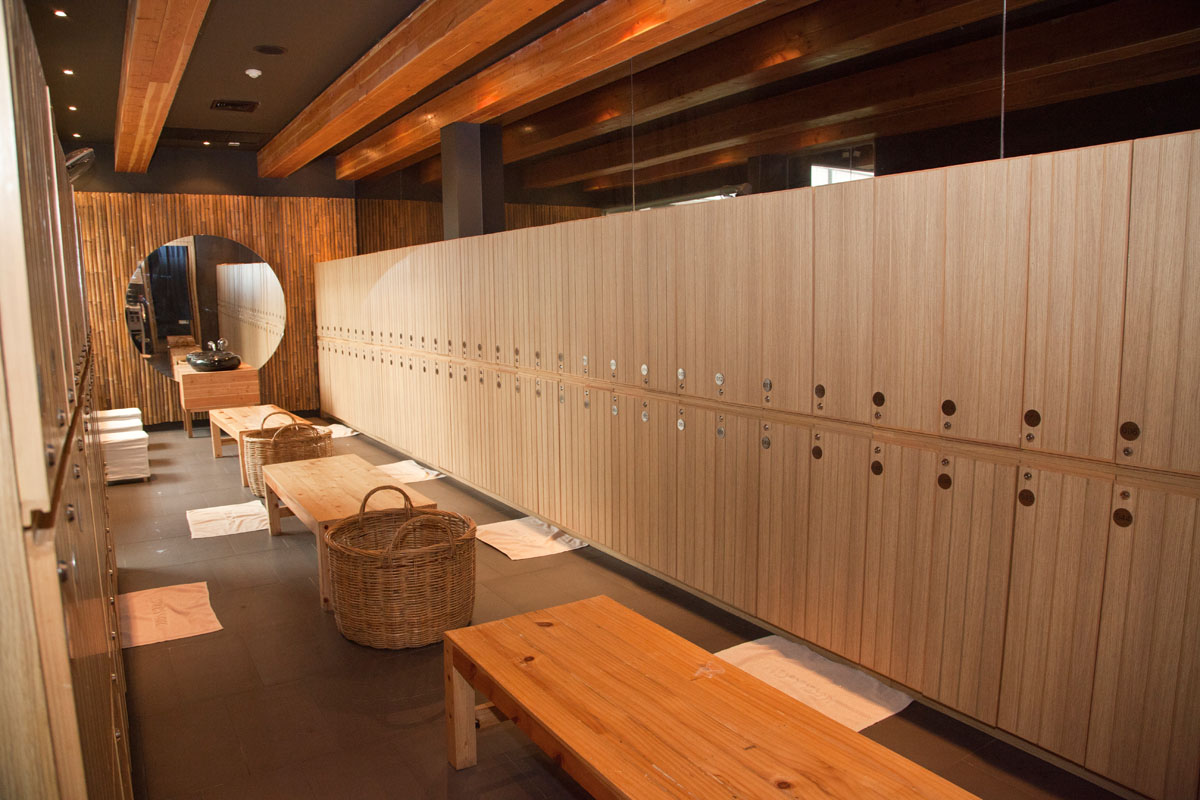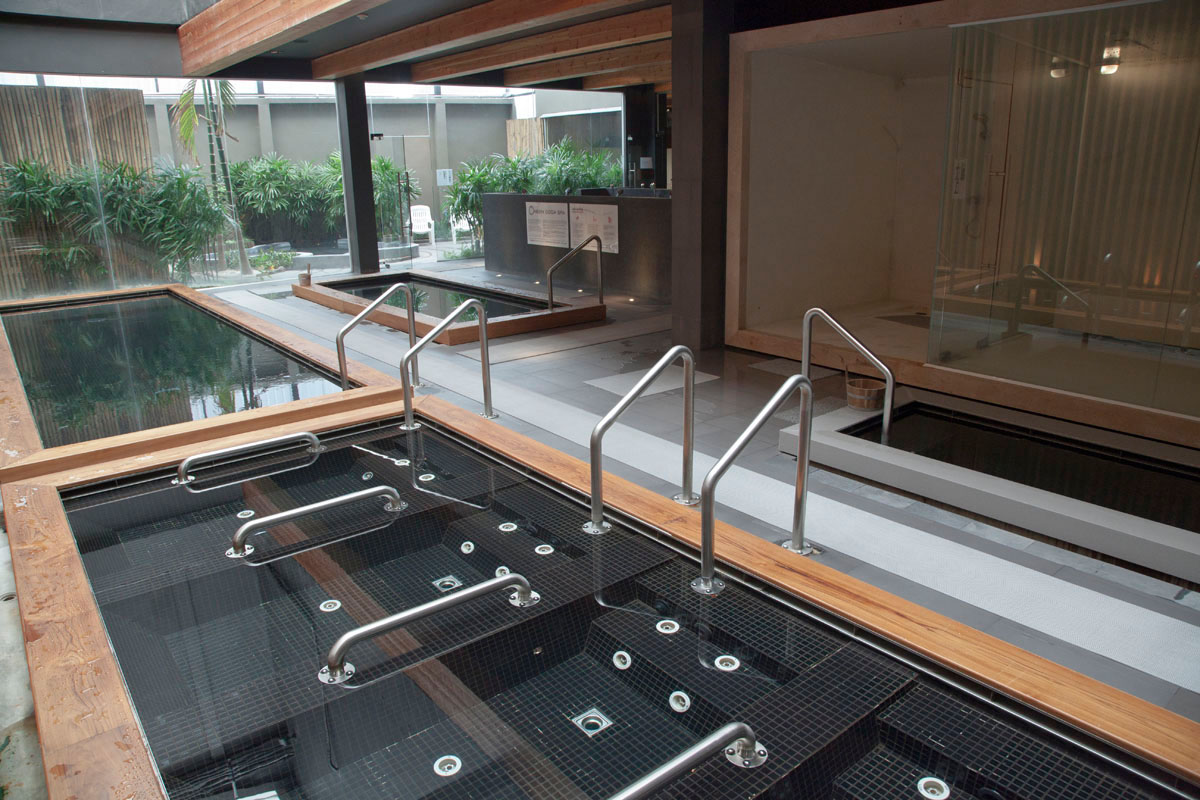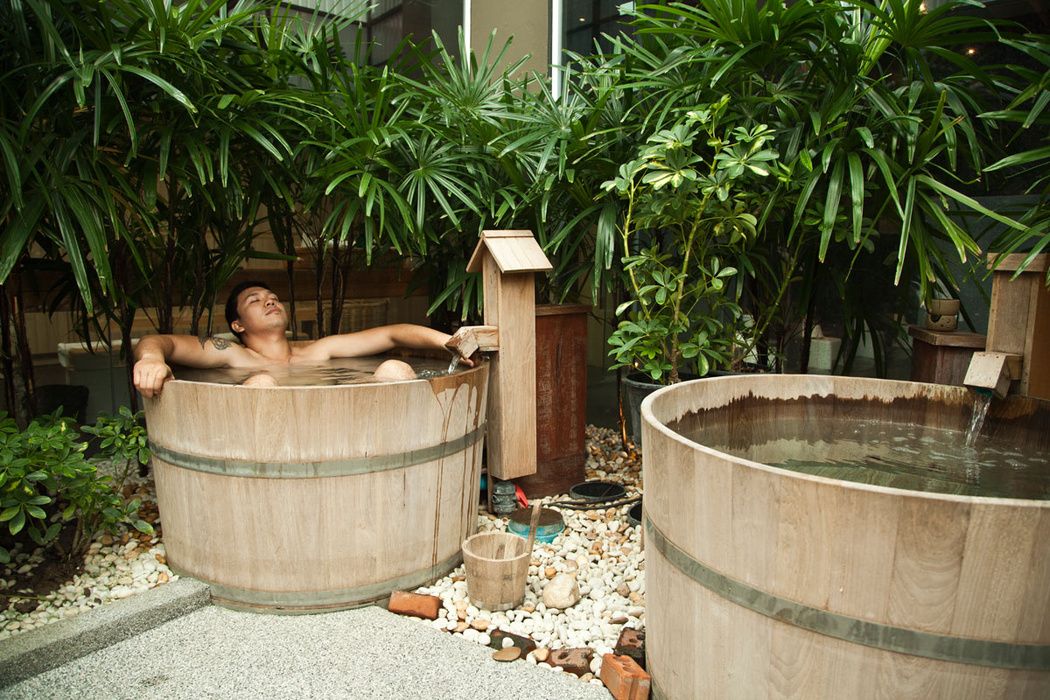A little too cool in the City of Angels for you right now? Here are three saunas to restore that sweaty glean to your skin.
It’s that once-in-a-blue-moon time right now when residents of the Big Mango, the hottest city in the world according to the World Meteorological Organization, need to find a way to keep warm. Sort of.
One relaxing way to turn up the heat while experiencing a steamy bit of a culture is a visit to Yunomori, Bangkok’s only Japanese onsen and spa, located in the A-Square complex on Sukhumvit 26, right next to K-Village. It’s not just for Japanese, according to Yunomori’s general manager, Seiichiro Tamura, although they represent about half of the clientele. Onsen culture has caught on with Thais and also draws visiting Taiwanese, Singaporeans and some Westerners, although not many Americans because, Tamura says, they are “very shy to be naked, not like German or French.”
Yes, Yunomori, like most other traditional onsens, requires its customers to soak in the buff, with just a little towel to cover themselves when walking around. However, if female customers are just too shy – like the kind you see swimming with their clothes on at the beach – disposable bras and panties are available and permitted in the women’s section, which is separated from the men’s baths. However, Tamura says he has heard that the trend amongst Thai women is to wear the bra and panties the first time they visit the onsen, then they dare to bathe topless during their second visit when they feel a little more comfortable, and by the third time, they are ready to go au naturel.
So why is it necessary for customers to totally strip down at onsens soon after donning and admiring themselves in their yukatas (Japanese robes) in the locker room mirror? Tamura says small traces of soap might get lodged in customers’ swimsuits and taint the pristine mineral water that supposedly has healthful and healing properties. And Yunomori takes its water seriously: they truck in 20,000 liters from the hot springs of Wat Wangkanai in Kanchanaburi every Thursday. But besides the threat of contaminating the water purity, communal naked bathing is just part of Japanese tradition. There is even a legal designation of an onsen described in Japan’s Hot Spring Law (onsenhou), which defines an onsen as having water, water vapor, or other gas that meets or exceeds the prescribed amount of chemical components with a temperature of 25 degrees Celsius or greater at the spring’s point of release.
Besides bathing nude, it is onsen etiquette (and basic hygienic common sense) that customers should shower before entering the baths and if you are sweating at any point during your bathing session. However, the shower experience is likely a bit different than what you may be used to – showering is done while squatting on tiny stools right in the open without any privacy, a tradition also found in Korean saunas. You might find it weird, but then again, it might make you wonder why you don’t normally sit while showering since it’s actually easier to clean your feet that way, and you could argue that it is more comfortable than standing up.
Yunomori provides one long rectangular tub that meets the strict criteria demanded of an onsen and it can fit around 10 people at one time. There is also a carbonated bath, which supposedly has its own healing properties, along with individual hot tubs set at various temperatures that are filled with non-mineral tap water. There is a separate outdoor area within the facility where you can find two wooden individual barrel-like tubs and a pleasant communal tub made of stones, and there is also a steam room and sauna in case you aren’t hot enough. To help regulate your body temperature, there is a cold tub that will likely give you a shock when you take the plunge, kind of like a natural triple espresso.
Yunomori spared no expense in building the THB70 million facility, so all things considered, the 450 baht entrance fee for the tubs, steam room and sauna is not really too expensive. And at THB350, the price for an hour-long Thai or foot massage is only slightly more than your average soi massage joint – and a lot cleaner and more refined. Aromatherapy sessions (THB900 for 90 minutes; THB1,000 for two hours) and the body scrub (THB750 for 45 minutes) will set you back more, but it still can be considered a bargain compared to prices you’ll find at some of the more hi-so spas around town.
If you just can’t get your head around the naked thing, but you want to get your sweat on in a non-sleaze environment, there are other options.










Located on Sukhumvit Soi 12 is a Korean-style sauna, which also features a steam room, a “Siberian Winds” room (basically, a giant freezer), a hot tub, a hotter tub and a cold tub. It isn’t as elaborate as some Korean jjimjilbangs, which often include beautifully decorated specialized saunas, salt rooms, herbal rooms and heated floors on which you can lay down while watching giant screen TVs playing K-Pop, sports, and zany Korean game shows. But for THB350, you can soak and sweat in a clean atmosphere for a good price and keep your privates to yourself since The King and I does provide customers with garments to wear while bathing. They also offer reasonably priced, enjoyable massages




For a completely different sauna experience, there is the far infrared sauna at Rasayana Retreat on Soi Prom-Mitr off Sukhumvit Soi 39 – a considerably more expensive option at THB1,050 for a 40-minute session, but it is a much more high tech experience. A conventional sauna might raise a thermometer’s mercury within the 65-to-85 degree Celsius range, whereas a far infrared sauna brings up the temperature to somewhere between 40-to-60 degrees. The radiant, far infrared heat manages to (allegedly) help release toxins that are deeply embedded in our bodies more easily than the sweltering air found inside traditional saunas, and there are claims that infrared sauna users perspire two or three times more because the heat is more tolerable, thus you can stay inside longer.
Here’s some images from inside the onsen scene:


But if none of these options appeal to you and you still want to sweat, forget the sauna and just wait a month or two for the hot season to kick in and go for a nice long walk.
Joel Gershon is a journalism lecturer at Thammasat University. He is currently working on a documentary film entitled “Cirque du Cambodia” about two young Cambodians who dream of performing with Cirque Du Soleil.





Reader Interactions